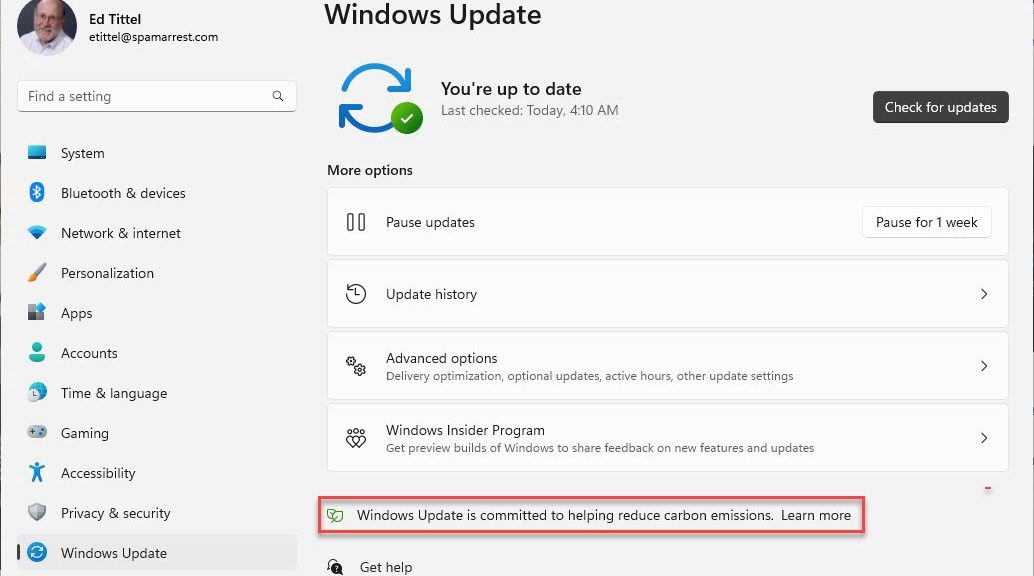Here’s something a little off the beaten track for Windows 11. As per its Windows Insider announcement, Build 22567 WU seeks lower energy footprint. Overall Microsoft fervently pursues carbon neutrality. Indeed, its latest Windows 11 Dev Channel build pushes that further and faster.
How Build 22567 WU Seeks Lower Energy Footprint
Here’s what the blog post says (co-authored by Amanda Langowski and Brandon LeBlanc):
Windows Update will try to schedule update installations at specific times of day when doing so results in lower carbon emissions. Most electrical grids are powered by multiple sources, including renewables and fossil fuels. Whenever possible, Windows 11 will now prioritize installing updates in the background at times when greater amounts of clean energy sources (like wind, solar, and hydro) are available. Users can always choose to install updates immediately by navigating to Settings > Windows Update and choosing “Check for Updates”.
To this end, MS partnered with electricityMap and WattTime. Their monitoring helps determine when PCs can likely run using renewable “juice.” If enabled, users see the string boxed in red in the lead-in graphic. Frustrating sidenote: following the “Learn more” leads to no information on this topic. Sigh.
Microsoft’s Carbon Footprint Initiatives
On the other hand, search that landing page for “zero carbon.” Thankfully, you’ll quickly find the MS CSR page. CSR stands for “Corporate Social Responsibility.” At MS, it covers a broad range of initiatives. Simply put, MS says it plans zero carbon status by 2030. That means pursuing these intiatives, among others:
- Bring more zero carbon energy onto the grid. Take more high carbon intensity energy off the grid. MS labels this “decarbonizing the grid.”
- Aggressively adopt next-gen technologies (including sea-water cooling) to double data center efficiency. MS names this “redesigning datacenters for energy efficiency.”
- Changing contracts and reducing financial and technical risks to grow and improve access to clean energy sources. MS explains this as “making it easy for anyone to buy more clean energy.”
- In particular cloud-based infrastructure for Azure has targeted ways to improve energy consumption and use while making clean energy sources cheaper. MS describes this as “a tech-driven approach to wind power.”
Obviously, Microsoft is serious about its own use of energy and how its services and offerings affect general energy use and usage patterns. I’m behind its efforts 110% and would like to see other cloud providers follow in its path. Great stuff!
